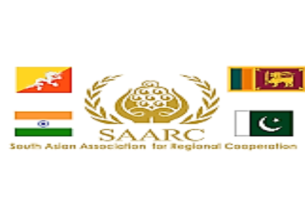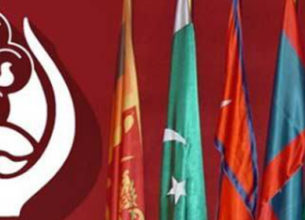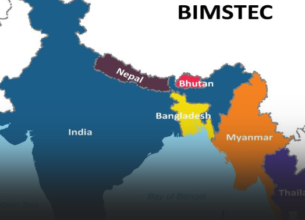SAARC 2.0
Why in News?
- India has shown diplomatic resilience and leadership by forging unity in the neighbourhood in the war against COVID-19.
Highlights:
- A tweet by Prime Minister Narendra Modi resulted in the first-ever virtual summit of SAARC leaders recently.
- In the backdrop of political capital invested by New Delhi in strengthening BIMSTEC and the urging it received recently from Nepal and Sri Lanka to resuscitate SAARC, this conference was quite significant.
SAARC Virtual Meeting and its Outcome:
- All the eight member-states were represented at the video conference — all at the level of head of state or government, except Pakistan.
- South Asian nations agreed to evolve a common strategy to meet the challenge posed by the Covid-19 pandemic.
- India proposed the creation of an emergency fund with an initial contribution of $10 million to halt the onslaught of the disease that has so far claimed nearly 6,000 lives globally.
- Pakistan sought to use the occasion to raise the Kashmir issue, calling for the lifting of embargos on communication in Kashmir to better tackle the spread of Covid-19.
- PM Modi also offered online training for health workers in Saarc countries to scale up skills to beat Covid-19.
Follow up on the Meeting:
- COVID-19 Emergency Fund: Within days, all the countries, except Pakistan, contributed to it voluntarily, bringing the total contributions to $18.8 million. However the sum is less but seeing the lesser COVID-19 effect on South Asia, it is justified.
- Fund operationalised: It is controlled neither by India nor by the Secretariat. It is learnt that each contributing member-state is responsible for approval and disbursement of funds in response to requests received from others.
- Implementation: India is in the lead, with its initial contribution of $10 million. It has received requests for medical equipment, medicines and other supplies from Bhutan,Nepal, Afghanistan, Maldives, Bangladesh and Sri Lanka.
- A follow-up video-conference of senior health officials was arranged on March 26.
- Significance: India’s imaginative diplomacy has leveraged the crisis to create a new mechanism for workable cooperation.
Challenges:
- Pakistan’s non-cooperation: Saarc has been in the ICU since 2015, on account of Pakistan’s refusal to cooperate in regional connectivity projects, and India’s refusal to engage with Pakistan.
- The last SAARC summit was held in 2014 and subsequent summits could not be held in the backdrop of terrorist attacks in Pathankot and Uri. Preference to BIMSTEC: BIMSTEC has more trade and greater trade potential due to the presence of two important trading partners India and Thailand.
- BIMSTEC has better regional connectivity via land and sea.
- SAARC adherents maintain that all proposals for cooperation should be routed through the Secretariat and activities should be piloted by the incumbent chair.
- Given what Pakistan has done to harm India’s interests since the terrorist attack on the Uri Army base in 2016 and its continuing resistance to cooperation against COVID-19, both New Delhi and its friendly neighbours need to start preparing themselves for SAARC 2.0. India has been developing connectivity with Myanmar, Bangladesh, Thailand. So similarly, it should do in South Asia even if it means bypassing Pakistan.
South Asian Association for Regional Cooperation (SAARC):
- The signing of the SAARC Charter in Dhaka established the SAARC in 1985.
- Its secretariat is in Kathmandu, Nepal.
- Objectives:The SAARC seeks to promote the welfare of the peoples of South Asia, strengthen collective self-reliance, promote active collaboration and mutual assistance in various fields, and cooperate with international and regional organizations.
- Eight states―Afghanistan, Bangladesh, Bhutan, India, Maldives, Nepal, Pakistan, and Sri Lanka.
- Six observers—China, Japan, European Union, Republic of Korea, United States, Iran










